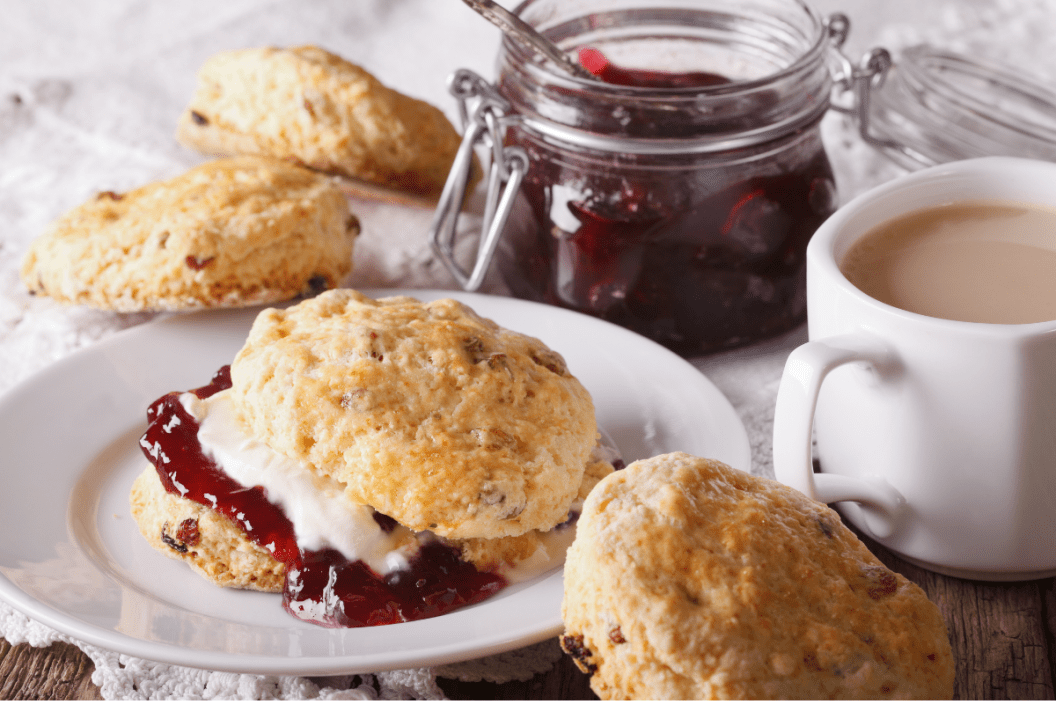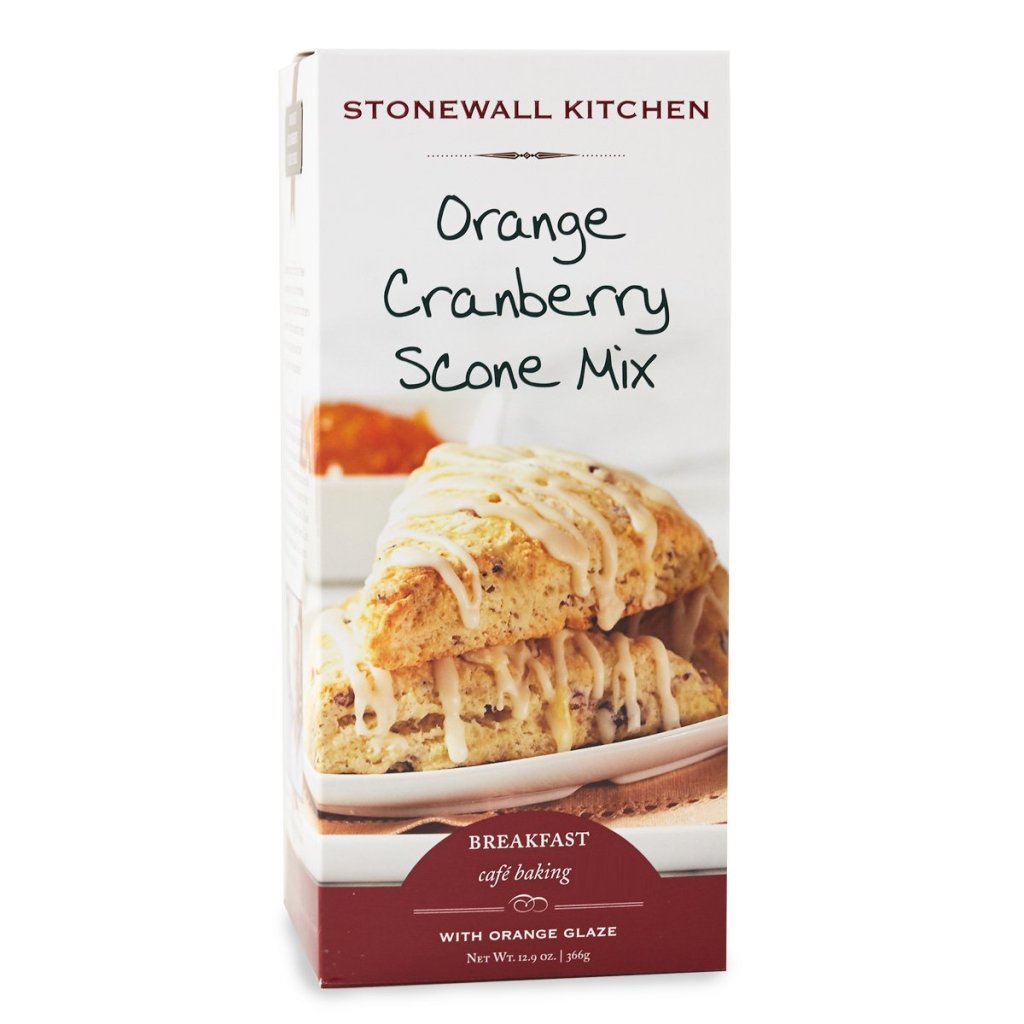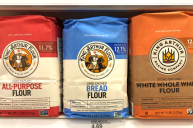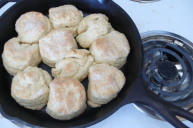In my mind, the word "scone" conjures up an image of cute British people drinking tea and eating finger sandwiches. As for biscuits, all I know from my local coffee shop is that they're yummy breakfast pastries with various additions like chocolate or berries. When it comes to tasty food, I usually don't ask questions. However, it turns out that there are some true distinctions in the scone vs biscuit debate!
Similarities of Scones and Biscuits
Biscuits and scones do have a lot of similarities- they're both carb-centered, flaky breakfast foods, best enjoyed with jam or butter. Both of these yummy brunch or breakfast delicacies are made with flour, fat, and a leavening agent like baking powder or baking soda. Scones and biscuits are easy to confuse unless you're a baker or breakfast food connoisseur, which is why scone vs biscuit is such a common query.
Although they have very similar compositions, scones and biscuits have different origins. Biscuits were brought over by the Brits, and they quickly took on a life of their own. Scones originated in Scotland in the sixteenth century, where they were invented as a quick bread, a term for breads that don't need to rise. They were cooked with oats and baked on a griddle. Although the Scottish were already enjoying their scones for breakfast, this tasty bread didn't become widely popular for a couple of centuries.
A Brief History of Scones
Scones rose to popularity at the same time that afternoon tea came to be. We have Anna, the Duchess of Bedford, to thank for this tradition. In the nineteenth century, Anna ordered a platter of tea and snacks one afternoon, which happened to include scones. This was such a lovely experience that she continued to have tea and scones every afternoon, which became the time-honored tradition of high tea in England.
There are variations of scones in different countries, though they are always breakfast pastries. When it comes to British scones, they are often baked as sweet scones, but savory scones are accepted as well. The British add raisins, currants, cheese and dates to their scones if they want extra flavoring, a characteristic we'll get back to in our scone vs biscuit debate.
In Scotland, on the other hand, scones are often made from potato flour. They are called tattie scones and resemble a pancake. These variations on the scone continue worldwide, so you will find a different scone depending on what country you're in. It sounds to me like scones can really be whatever you want them to be!
Risk it for the Biscuit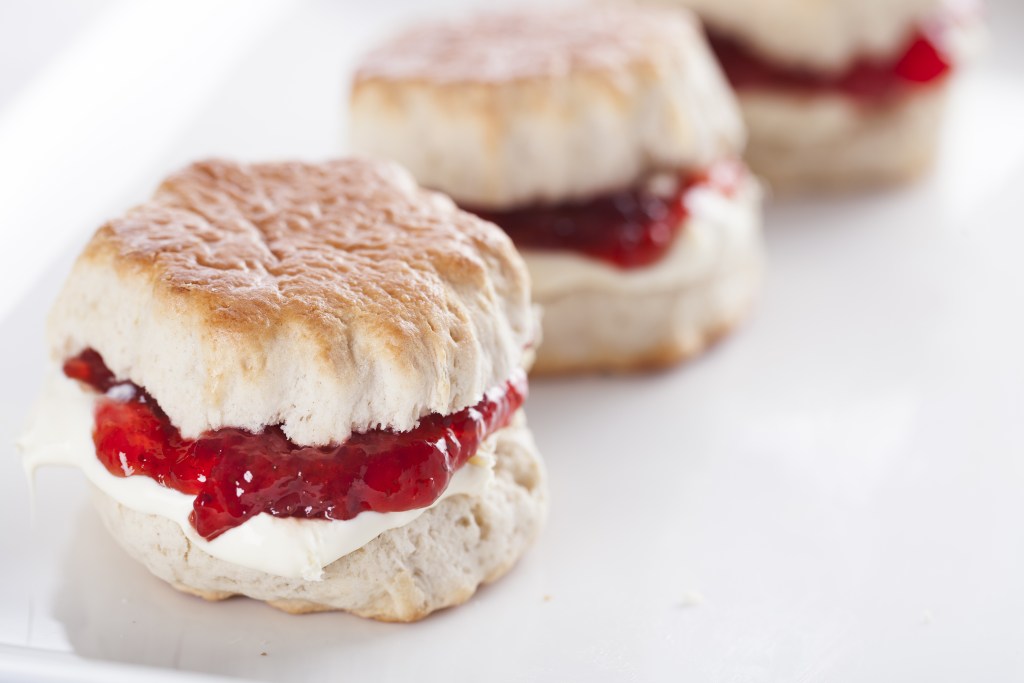
When it comes to biscuits, first we need to clarify that we're discussing American biscuits. These are the golden brown rounds of bread served for breakfast or dinner in America. British biscuits, of course, are what we call cookies here in the United States. The American biscuit was brought over by British colonists, and it quickly evolved across the country.
The South has a special place in its heart for biscuits, where settlers used soft wheat flour, butter, lard, and buttermilk to create their biscuit dough. This extra fat resulted in flaky layers, a distinctive trait of the Southern buttermilk biscuit. While biscuits are also popular in the North, these biscuit recipes typically use bread flour, resulting in less flakiness.
A Biscuit's a Biscuit, A Scone's a Scone
https://www.instagram.com/p/CCGnH0DDjNi/
Now that we know the background of these well-loved breakfast foods, we can get back to examining the differences between them! The main distinction between biscuits and scones is their texture. Biscuits are flaky and buttery. Scones, on the other hand, are dense and crunchy, drier and crumblier than their fluffy counterparts. This is because biscuits have more butter, while scone recipes employ heavier ingredients like heavy cream.
Another key difference in the scone vs biscuit conversation is that the denseness of a scone invites extra flavorings. It's common to flavor scones with add-ins like fruit or chocolate chips, along with savory ingredients like cheese. Biscuits typically remain in their pure, biscuity state, needing no additions.
While the composition of scones and biscuits is different, they also serve different purposes. Biscuits are typically served with more savoury dishes, like eggs, gravy, or even fried chicken if you're feeling extra Southern. Scones are often served with jam or clotted cream. Since scones are slightly sweeter than biscuits, they are best enjoyed with other sweet foods. Although these two baked goods have their differences, they're both delicious in their own right!
Products featured on Wide Open Eats are independently selected by our editors. However, when you buy something through our links, we may earn a commission.
